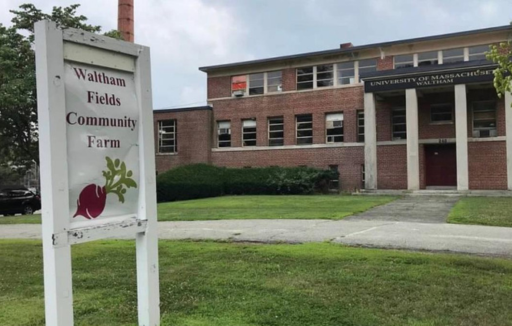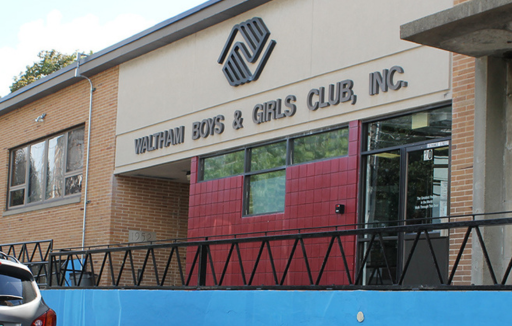By AUBREY HAWKE
Waltham Times Contributing Writer
A city committee voted to support giving $6 million to the Waltham Boys & Girls Club for building restoration and $1.3 million to remove contamination and renovate structures at 240 Beaver St, where the Waltham Fields Community Farm has been located for 30 years.
The Long Term Debt & Capital Planning Committee met last Monday, Nov. 4, and unanimously voted to pass both spending measures.
The grants still need City Council approval.
The money comes from the city’s Community Preservation Act fund. The CPA allows municipalities to raise money through a real estate tax surcharge. The money collected from the surcharge can be used to buy and protect open space; preserve historic buildings and landscapes; and create and maintain affordable housing.
Cleaning contaminated historic property
The CPA funding for 240 Beaver St. targets the long-standing issue of environmental contamination affecting certain areas of the property. More specifically, the money will abate the property’s brick administration building, the four large glass greenhouses, the Corn Lab building and its attached smaller greenhouses.

The city bought the 23-acre property from the University of Massachusetts in March 2022 for $17.4 million. The city currently leases much of the property to the nonprofit Waltham Fields Community Farm, which has been farming several acres of the land for three decades.
Crystal Philpott, a purchasing agent for the city who represented the funding request at the committee meeting, said the CPA funds will pay for replacing windows, pipe insulation and mastic tiles for an old administration building on the property; the removal of mastic tiles and insulation at the Corn Laboratory; and the demolition of old glass greenhouses.
Philpott told the Long Term Debt & Capital Planning Committee members that the city’s plans for the property would not require those leasing space at the site, including the Waltham Fields Community Farm, to move during the actual work. She said the timing of the work will happen when they’re not going to be in operation
However, WFCF executive director Stacey Daley refuted that assessment.
“We use that land year-round. There was a comment to say that they didn’t believe there would be any impact on the farm because we wouldn’t be operating then, and that is inaccurate,” Daley said.
The organization’s Learning Garden, which hosts year-round educational programs for children, is located across a gravel road from greenhouses and Corn Laboratory. This year the farm is piloting a winter farm-share program, and the farm expects to have crops growing in the ground as late as December and plans to have produce distributions throughout the winter.
“We hope there will be no impact on our programs, because that’s a direct impact on our revenue,” Daley added.
She said the farm wants to see a barrier in place and daily air-quality monitoring while the abatement work is happening. “For the safety of those that are utilizing the property, and for the optics of it, we want to ensure that this process is safe for our program participants,” she said.
Philpott said there will be air-quality testing during the planned 60-day abatement process. She also said “there is definitely a strict process that the contractor will have to follow. Nothing will be open air. It’s going to be contained.”
Daley also addressed questions and comments made during the meeting about the farm’s use of the land, stressing that Waltham Fields Community Farm never used the glass greenhouses nor knowingly grew crops on any contaminated land.
Needed modifications for the Waltham Boys & Girls Club
Meanwhile, the $6 million approved for the Waltham Boys & Girls Club will go to building restoration and repairs.
Plans call for updating its Exchange Street facilities to comply with the Americans with Disabilities Act’s standards for building accessibility; this includes the planned installation of an elevator to make the entire building accessible to those with mobility issues.
“Our entire mission is to make sure that we can serve all young people who need us, and right now we’re not able to do that,” said Erica Young, the club’s executive director.

The Waltham Boys & Girls Club, which dates back to 1938, moved to its current location at 20 Exchange St in 1952.
The funding, which would be doled out in three equal payments over three years, comes with three stipulations, according to city officials:
First, they said the renovations must comply with the city’s historic preservation standards. Second, the club must implement a funding allocation accountability plan in conjunction with the city. And third, the club must agree to return any unused funds if it sells the building in the next 30 years.
Construction work on the Boys & Girls Club building will take an estimated 12 to 18 months, during which the building will not be usable.
Young told the committee that the organization is making plans to continue operations at another location, but she did not disclose the location.
Carlos A. Vidal, a member of the committee and councilor-at-large for the city stressed the importance of continuing operations while the construction is underway.
“As a former volunteer there, with the little that we had, we were able to do amazing things. And I am always amazed by the stuff that you guys do there,” he said.
The City Council must vote on the CPA funding allocations. The council is expected to take up the matter at its public meeting on Tuesday, Nov 12, at 7:30 p.m. at City Hall.
If you value stories like this, please support The Waltham Times through a tax-deductible gift.
